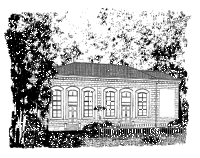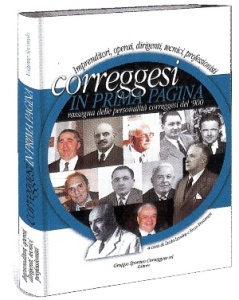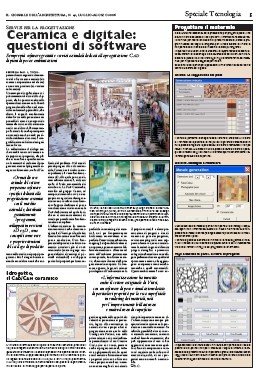The way
In the far away 1982, at dawn of dispenses software in Italy, an engineers group just graduate at the Bologna University (where they has had opportunity to test the mainframe's calculation machins and ather scarcely interactive systemes) decided to join in unborn child and limited dispenses software field, they renounced at the utilizzation of great systems and concentrate them self about small home-computer, almost programmable calculator, then available.
Born so OMNI DATA and simultaneously born also the first software programs of structural calculation and thermotecnical about APPLE II e COMMODORE systems.
The necessity of utilize a more developed graphics bringing, after few time, at the utilize of more specialized systems. A first vectorial CAD software for the parametric composition of prefabricated about big and expesive (but practically unique on the world-market) TEKTRONIX systems was analysed and codified.
At the end of years '80 the LISA systems first and MACINTOSH APPLE later was experiment, it was the first icon interface computer, and simultaneously the software was translate to the 8086/8088 IBM systems first and to the following 286 later.
As hardware evolution go on, the programs and the software applications become more sophisticated and it find it natural application environment in the 1991-92 with the distribution of WINDOWS 3.x operating system that allow an applications evolution also at multimedia level with utilization not only of static images but also sound, animations, films, etc. that mount on CD-ROM (create with the first uncertain CD writer) allow to made the first quality applications already since the end of 1992.
Simultaneously ather systems was experienced (AMIGA for the tridimensional graphics and for the creation of synthetic images, CD-I Philips for the consumer fields, etc.) for take out the best tecnical performance. All these elaboration and programming technics and all these experience flow in product for multimedia lists, virtual environment, tridimensional CAD, graphics and alfanumeric data-base elaboration, CAD library and macro for the interfacement, WEB site, ect. that it still stay (with hardware tools more powerful) the main productive activity.
In the time OMNI DATA is nurse of other collateral firms that you/they are born from his first intuitions and it makes school as method and technique. In 1999 it is moved to his new center restructuring a building complex of beginning century where it proposes a working environment of relax and calm.

 |
 |
In the year 2000 OMNI DATA reaches the enviable production of over 30,000 CD-ROMs containing softwares all of own production and that you/they are distributed in the whole world, by now undisputed leader of CAD for ceramic layings. It also begins in the same period the on-line distribution by internet - WEB.
After careful analysis of the technologies and the market from 2002 it also begins the specialized production and the reconversion for regulating pocket PC, smartphone, tabletPC completing so the bases on which to propose the knowledges acquired in the time also collaborating with great firms of production and distribution to world level.
20th years of OMNI DATA (1982 - 2003)
OMNI DATA : COMPUTER IN THE QUIET OF COUNTRY
by Fabrizio Piccinini

"Le maggiori industrie ceramiche al mondo si rivolgono a lui per avere sempre nuovi programmi di disegno computerizzato, quei software che consentono di simulare al PC, con immagini tridimensionali, la progettazione e la posa di mattonelle: fondatore e amministratore unico di OMNI DATA Srl, l'ingegnere Paolo Bartoli da anni crea programmi poi utilizzati nei cinque continenti, sua su CDROM che in internet. all'ultimo CERSAIE ha presentato ad esempio sette nuovi software con i marchi dei vari gruppi ceramici. Una produzione che raggiunge i trentamila CDROM l'anno, in cinque lingue, e che fa del comparto il suo principale referente.
' Ero partito dall'impiantistica e dal meccanico, quindi il tessile, la crisi di Carpi mi ha spinto verso il ceramico '. Perciò si è conquistato la leadership nel settore, ' un settore di nicchia ', quasi minimizza: sta di fatto che ha committenti in tutta Italia, i quali a loro volta forniscono i programmi ai clienti stranieri.
....
Eppure OMNI DATA è passata da studio professionale (tuttora esistente) a ditta individuale a società di capitali ( ' E' stato difficile dover fare scelte sui soci ') ed ha raggiunto i risultati odierni grazie alla continua rincorsa tecnologica che ha permesso di rimanere vitati. Il segreto? ' Il CAD, ossia il disegno aiutato dal PC, al contrario di Internet e altre tecnologie informatiche, richiede molto tempo, è importante la storicità, l'anzianità, perchè necessita di garantire la continuità e l'evoluzione del software al cliente. "
extracted from "Correggesi in prima pagina - rassegna delle personalità correggesi del '900" - pagg. 244-245 Ed. GSG Srl - 2002
'Giornale dell'Architettura' - July / August 2006
OMNI DATA: software and services for 3D CAD planning
by Stefano Converso

" Per un progettista l’informazione sui modi di impiego dei materiali è fondamentale almeno quanto l’avanzamento tecnologico ed estetico dei prodotti che le aziende sviluppano. L’avvento di internet ha accelerato enormemente la funzione dell’informatica nel web come strumento di comunicazione con i progettisti, e la rete è ormai utilizzata in via quasi preferenziale dagli studi per ottenere informazioni tecniche da utilizzare nei progetti. Proprio per questo, anche nelle strategie di marketing delle aziende del settore ceramico cresce di importanza il software, come strumento di interfaccia verso la clientela «tecnica» dei progettisti.
Sono ormai diverse le aziende che sperimentano l’applicazione ai CAD della filosofia freeware: si preparano software specifici dedicati alla progettazione ceramica con il marchio aziendale, che vengono distribuiti gratuitamente in migliaia di copie, attraverso Cd o direttamente scaricabili dalla rete. I programmi, sviluppati in versioni 2D e 3D, sono concepiti come vere e proprie estensioni del catalogo di prodotti, di cui rappresentano un elemento «attivo», permettendo agli utenti di comporre piani di posa con i computi metrici relativi e visualizzazioni renderizzate degli ambienti interessati; ma le declinazioni di questo principio generale sono diverse da azienda ad azienda e ne riflettono i diversi ambiti di intervento.
Un caso particolare di questo sviluppo ad hoc è nel lavoro svolto dalla società OMINI DATA di Correggio, che ha progettato e realizzato un software-base chiamato TileCAD, permettendo poi a ogni azienda di avere una propria licenza di distribuzione dedicata e personalizzata seguendo il concetto del software come servizio (da mettere a disposizione del cliente) e non come prodotto (da vendere sul mercato)." ...
extracted from "Il Giornale dell'Architettura" - n.42, Luglio-Agosto 2006 in allegato 'Il Giornale della Tecnologia' - Edizioni Umberto Allemandi & C., Torino

 [Freeware]
[Freeware]